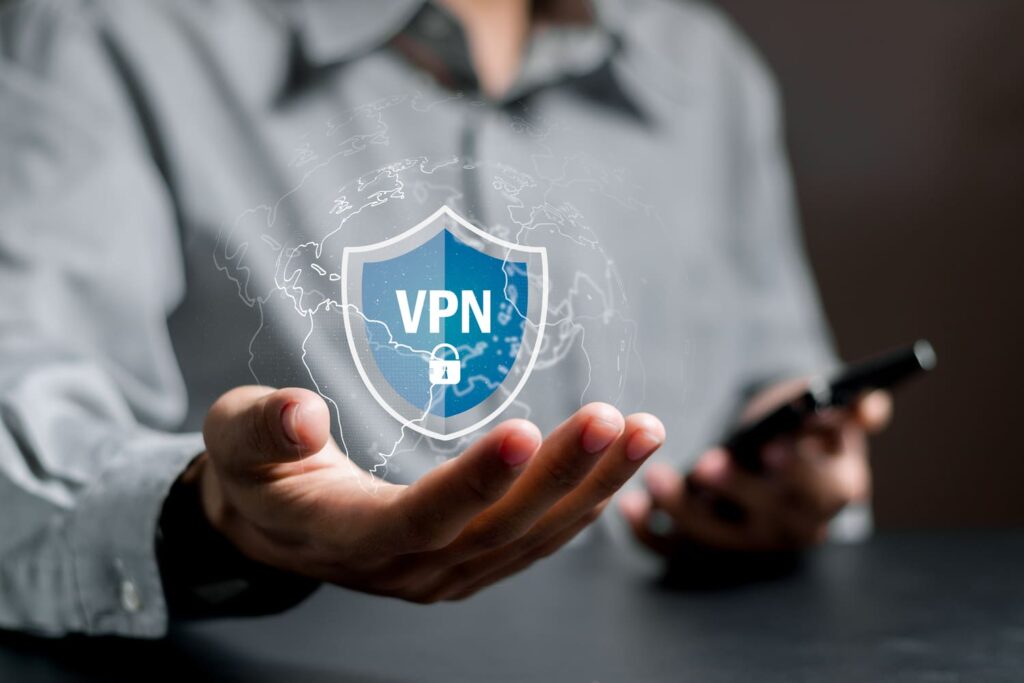Introduction
By 2023, the average global cost of a data violation reached US $ 4.45 million, representing a 15% increase in three years , according to the IBM annual report . This value reflects not only redemption payments, but also the costs associated with data recovery, operational interruptions, regulatory sanctions and damage to corporate reputation - perhaps the hardest to repair.
The case of Moveit , a file transfer platform used by thousands of companies worldwide, illustrates this scenario well. Also in 2023, a security failure exposed data from over 62 million people and compromised more than 2,000 organizations . The incident generated operational stoppages, lawsuits and an image crisis. And all this happened from a neglected point of entry : a endpoint .
These numbers wide an urgent reality: the endpoints became the new risk perimeter of companies . Laptops , smartphones , servers and any device connected to the corporate network are today preferential targets of cybercriminals. And protecting these input points requires much more than antiviruses. It requires continuous monitoring, incident response, vulnerabilities management and robust access policies.
Endpoint security solutions help companies face these threats with strategy, technology, and future vision .
Good reading!
Endpoints security ?
In the past, protecting devices from a company meant, in most cases, to install a good antivirus and expect the best. But the scenario has changed, and fast. Today, with the advancement of remote work, the growing use of the cloud and the diversity of connected devices, the risks multiplied at points that, until recently, were not at the center of safety attention: the endpoints .
But after all, what are endpoints ? These are all physical devices that connect with a corporate network and interact with organization systems and data. We are talking about notebooks , smartphones , tablets , desktops , service terminals, servers and even IoT equipment (such as connected security cameras or industrial sensors). Each acts as a gateway , and therefore as a potential vulnerability.
Thus, Endpoint is the answer to this new reality. It is a set of solutions and practices aimed at protecting each individual device against unauthorized accesses, malware , data kidnapping and other threats that explore precisely the decentralization of the digital environment.
But what differentiates this approach from what we already know traditionally as antivirus? Understand.
Difference between antivirus vs. ENDPOINTS SAFETY
The difference is not only in technology, but in vision. While antivirus acts reactively , focused on identifying and eliminating known malicious files, Endpoint security adopts a proactive and integrated approach focused on prevention, monitoring and response.
endpoint security solution is able to identify suspicious behaviors even before a threat is actually performed. It can isolate a compromised device, block communications with suspicious addresses and trigger automatic alerts to security teams - all in real time, based on continuous intelligence .
Endpoint security considers the context of the device : its level of access, location, conformity with internal policies, and even integration with other safety layers, such as firewalls , Sies and Identity Solutions. That is, it is an architectural view, not just punctual defense .
With this, what we have is not a replacement of antivirus, but an evolution . And in the face of the level of sophistication of current threats, this evolution is no longer optional to be mandatory.
Before we understand more about the practical functioning of these solutions, it is worth understanding why the endpoints gained so much protagonism on the risk map of companies. And this is all about how and where these devices are being used today.
Why Endpoints become the weakest link in corporate security?
No company grows today without endpoints . They enable operations, mobility, service and productivity. But as they gain this protagonism, they also become one of the biggest points of fragility in security architecture .
For years, corporate protection has been structured around a perimeter: the company's internal network, surrounded by firewalls , access controls and centralized systems. But this perimeter no longer exists as before. With cloud popularization, the use of personal devices to access corporate and remote and hybrid work systems, the data now circulates by less predictable - and much more vulnerable paths.
Laptops connected to public networks, mobile phones with multiple applications installed, servers operating outside the datacers . Each of these scenarios represents an entry point that challenges classic control models. And in many cases, not even the security team has full visibility on all these devices.
In addition, in decentralized environments , such as those who adopt BYOD (English, Bring Your Device ”) policies, the challenge multiplies. How to apply consistent security policies when devices are not standardized, updated or managed in the same way?
This is why endpoints have become the most vulnerable link in corporate security. Not for isolated technical fragility, but because they started operating outside the coverage zone of traditional protections , in constantly changing environments and with direct access to sensitive data.
Endpoint 's safety acts precisely in this context, bringing visibility, control and response in real time to each connected device.
Endpoint security : How it works in practice
In theory, protecting endpoints is simple: ensuring that each device is monitored, updated and with controlled access. In practice, this requires coordination between various technologies, automated responses and intelligent policies that adapt to user behavior and environmental risk.
Instead of operating as a static barrier, Endpoint acts as a living and responsive system - which observes, analyzes and acts based on context, behavior and data in real time.
In practice, this performance is supported by three central pillars :
1) Continuous monitoring of behavior and traffic : visibility is the starting point. Monitoring endpoints in real time means understanding how each device behaves; which processes performs; which systems accesses; What type of data manipulates and how often. When crossed, these signs reveal deviations that may indicate the beginning of an attack. This intelligence allows you to identify threats even before they are triggered;
2) Detection and response with EDR : EDR ( Endpoint Detection and Response , in Portuguese, detection and response from Endpoint ) adds a strategic layer to protection. It not only detects malicious patterns, but also performs immediate containment actions . It can isolate a device, interrupt suspicious connections, and start automated investigation, reducing the time between detection and response. This transforms the vulnerable point endpoint an active defense agent ;
3) patches management and granular access control: known failures continue to be explored by attackers, even when there are already available corrections . These corrections, called patches , are updates released by manufacturers to close critical vulnerabilities . Automating the application of these patches ensures that devices are corrected with agility without depending on manual cycles . In parallel, granular access control establishes who can access what, based on variables such as identity, device, location and network type. This prevents users or applications from performing sensitive actions without proper authorization.
By combining Endpoint safety solutions act in a comprehensive and continuous way , reducing the attack surface and strengthening the company's digital resilience.
But after all, what kind of threat can they actually neutralize? This is what we explored in the next section. Keep following!
endpoint solutions
Devices connected to the corporate environment are frequent targets of attacks that take advantage of the flexibility and mobility of these equipment. More than protecting files or blocking viruses, Endpoint acts to contain threats that begin, manifest or propagate directly from these devices.
Here are the most common threats that can be detected and neutralized endpoint protection strategy :
- Malware installed from malicious files : The user opens a seemingly harmless attachment, runs a compromised installer or accesses a link . Malware settles locally, silently . Endpoint solutions monitor the system activity in real time and interrupt the process as soon as they detect standards outside the expected behavior - before the code spreads or acts on sensitive data;
- Ransomware with attempted file kidnapping : By compromising a device, ransomware begins to encrypt locally stored files and, in many cases, also accesses network shared directories. Endpoint safety recognizes this atypical behavior (such as rapid modifications in large volume of files), and blocks the execution automatically;
- Exploitation of known failures not yet corrected : Even with available updates, many companies take time to apply security patches These open flaws are explored to invade endpoints . Modern solutions automate the application of these corrections, closing loopholes as soon as they are documented and made available by manufacturers;
- Fileless attacks run directly on device memory : In this type of attack, there are no infected files being recorded on disk. Instead, malicious code is injected into system RAM, often using legitimate tools such as Powershell or automated scripts This behavior is invisible to traditional antivirus. Endpoint security can detect these executions by continuous process analysis and commands, even without the presence of physical files;
- Lateral movement from a compromised Endpoint : An attacker who gets access to a device tries to use it as a bridge to reach other areas of the network, raising privileges or accessing critical systems. Endpoint protection prevents this type of advancement by segmenting traffic, limiting permissions and monitoring attempts to raise access directly on the device.
These examples reveal a central point: the most impact attacks often begin discreetly and silently . This is why acting at Endpoint , with intelligence and speed, is no longer a reactive measure. It is the most direct way to contain threats before they gain scale.
In the next section, we advanced our journey to know the technologies that make this performance possible. In addition, we will also see how they combine to form a robust protection architecture connected to the reality of companies.
More effective protection technologies and approaches
Protecting endpoints effectively requires more than isolated tools. The complexity of current attacks calls for a coordinated architecture, capable of combining prevention, rapid response and contextual analysis . It is not just about blocking a threat, but of understanding your behavior, anticipating risks and acting quickly.
Next, we explore the technologies that support this integrated approach.
EPP, EDR and XDR: Complementary Layers
In a scenario of increasingly sophisticated threats, protecting endpoints requires a layer approach where each technology plays a specific but complementary role.
EPP ( Endpoint Protection Platform ) is the first line of defense . It acts by blocking known subscription -based threats by filtering malicious files, controlling the use of removable media and reinforcing protection with firewalls . It is effective in preventing traditional attacks, but cannot deal with threats alone that use evasive tactics and unprecedented behavior.
This is where EDR ( Endpoint Detection and Response ) comes in. This layer continuously monitors endpoints , analyzing the behavior of devices in real time. Thus, it is able to identify anomalous activities such as suspicious codes, side movement, fileless and persistence attempts. That is, EDR complements the EPP by detecting what escapes subscriptions, offering automated response and detailed telemetry for investigations.
Detection and Response (XDR ) represents an evolution of protection . When orchestrating EDR data with telemetries from other fronts (such as network, emails , servers and identities), it expands visibility and connects points to identify more complex campaigns. This reduces the detection and response time , as well as decreasing the threat time in the network.
With these three integrated layers , companies are no longer reacting to incidents to anticipate them with intelligence and agility , consolidating a much more contextual and effective defense.
Integration with SIEM and AI: scale analysis and context -oriented response
Endpoint protection is not just about what happens on each device, but on the ability to understand the digital environment as a whole. This is where SIEM ( Security Information and Event Management ) comes in, a platform that centralizes and correlates security events from different sources : network logs endpoint , among others.
By itself, SIEM acts as a structured repository of security data. But when combined with UEBA ( User and Entity Behavior Analytics ) and SOAR ( Security Orchestration, Automation and Response ), it gains predictive intelligence . This integration allows you to correlate apparently isolated events, identify unusual behavioral patterns, and automate real risk -oriented responses.
Machine Learning models , SIEM now anticipates suspicious behaviors and performing corrective actions quickly . Thus, it reduces the response time, minimizing false positives and increasing the accuracy of decisions
this orchestration is what transforms scattered data into coordinated actions , connecting context, urgency, and impact on a much more strategic response flow.
Cloud -based safety
Decentralization of work environments has imposed a new challenge on the protection of endpoints : maintaining control even when devices operate outside the corporate network. In hybrid and remote scenarios, depending on local or on-premise solutions compromises the effectiveness of safety.
In this context, cloud -based security gains protagonism by allowing :
- Centralized and real -time visibility of all devices, regardless of the location or network used;
- Uniform application of security policies , with continuous monitoring;
- Automatic updates , based on the latest threats and behavioral models;
- Capacity to climb and adapt as the digital environment evolves.
In addition, architectures such as SASE ( Secure Access Service Edge ) and ZTNA ( Zero Trust Network Access ) have also been consolidating as pillars to protect endpoints intelligently . While SASE combines network and safety functions in a single cloud -based layer, ZTNA reinforces the minimum access principle. Thus, no user or device is reliable by default, and all access is verified based on identity, context and safety posture.
More than adopting isolated technologies, protecting endpoints today requires an orchestrated and adaptable approach . And this is to understand how these solutions integrate to ensure visibility, response and governance in real time.
In the next section, we show how Skyone turns this technical challenge into competitive advantage , with a tailored and evolutionary architecture for each operation.
How skyone turns endpoints into strengths
In most companies, endpoints are still treated as an operational layer of IT. But in fact, they concentrate a decisive part of the risk and intelligence of the business . This is why, at Skyone , we treat the safety of these devices as a strategic priority.
We started with the diagnosis : we identify vulnerabilities, map behaviors, and evaluate how endpoints connect to the rest of the digital environment. From there, we structured a custom protection architecture , combining technologies such as EPP, EDR, XDR, SIEM and cloud -based solutions.
Our differential is how these layers are integrated and evolve together. Always with real -time visibility, automated response and policies that adapt to the context of the operation . In addition, of course, we also guarantee follow -up close to our experts, who continually adjust and optimize protection as the environment changes.
With Skyone , endpoints are no longer the fragile security link to become strengths in the company's digital resilience.
Interested and want to understand how it applies to your scenario? Talk today to a skyone expert! We are ready to turn risk into protection, and technology into competitive advantage.
Conclusion
Endpoint safety is, in many cases, the fine line between control and chaos . Not for an isolated technical reasons, but because it can represent how prepared companies are to deal with decentralized, unpredictable and increasingly connected environments.
In this article, our intention was to invite you to reflect : To what extent does your company see security as part of the business strategy? To what extent are your devices, users and data flows really protected? Or are they just covered by tools that no longer respond to the current reality?
The good news is that maturity in cybersecurity is not built overnight, but with structured decisions, systemic vision and certain partnerships .
At Skyone , we believe that protecting endpoints is not just mitigating risks. It is to ensure that the digital transformation of your company advances with confidence, autonomy and speed. And if this is also your ambition, we are ready to build this journey with you.
Want to keep exploring content that connect technology and strategy with depth? Follow the Skyone Blog Here we are always publishing reflections and guides that help leaders make smarter and more prepared decisions for the future.
FAQ: Frequently asked endpoints
Endpoint security is one of the most critical fronts of modern cybersecurity, however, it still raises doubts, both technical and strategic. Next, we gathered direct answers to the most common questions on the subject, whether you are a technology expert or a decision maker for more clarity.
What does endpoint ?
Endpoint security is the set of technologies and practices aimed at protecting devices connected to the corporate network (such as notebooks , smartphones , servers and IoT equipment). It acts by preventing improper access, blocking malware , monitoring suspicious behaviors and responding to incidents in real time. Its goal is to prevent these devices from becoming vulnerable points that compromise the entire operation.
What is the function of endpoints in a corporate network?
Endpoints are access tips between users and corporate systems. They perform tasks, access data, interact with applications, and often operate outside the traditional perimeter of the network, especially in hybrid and remote environments. Therefore, in addition to enabling the operation, they can also serve as a gateway to attacks. This makes your protection a strategic priority for information security
endpoint solutions ?
Antivirus is a layer of protection focused on known threats based on signatures. Endpoint safety solutions include technologies such as EPP, EDR and XDR, which work proactively, monitoring behaviors, detecting advanced attacks (such as fileless and apt) and automating real -time answers. In short, antivirus reacts; Endpoint security anticipates, responds, and integrates with the corporate safety ecosystem.
endpoint safety affect device performance?
With modern technologies, no. endpoint safety solutions operate lightly and efficiently, often processing complex cloud analysis, which reduces the impact on devices. In addition, it is possible to configure protection levels according to the user profile, ensuring a balance between performance and safety.





